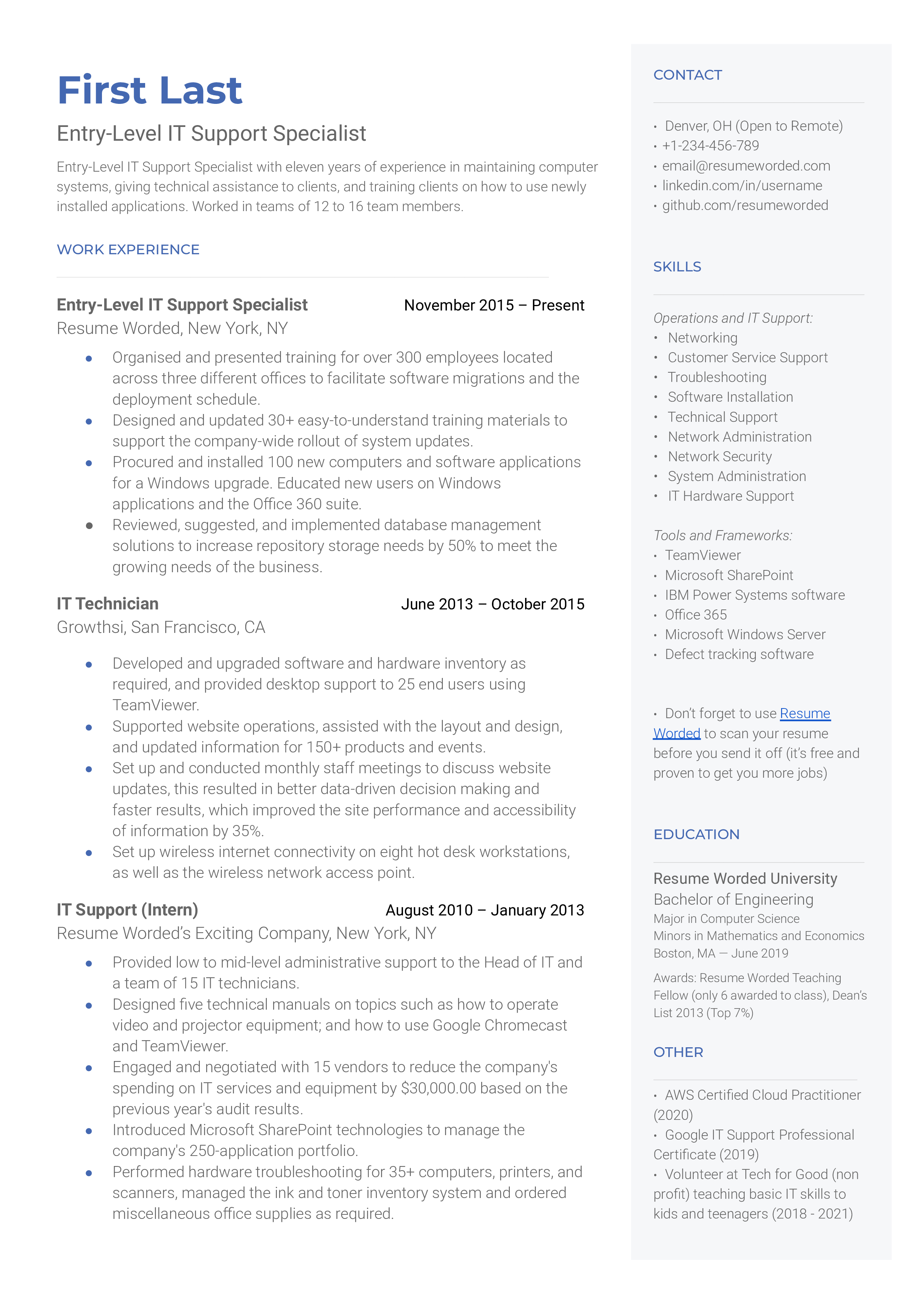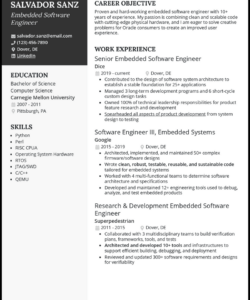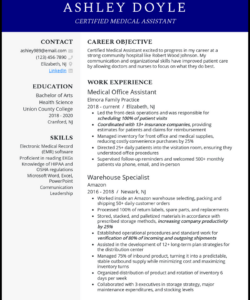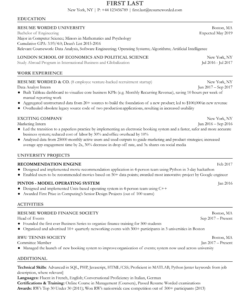Navigating the landscape of IT job applications can feel like debugging a complex system when you are just starting out. You know you have the drive, the passion, and the foundational knowledge, but how do you effectively convey that to a hiring manager who is sifting through dozens, if not hundreds, of resumes? Without years of professional experience under your belt, it might seem daunting to create a document that truly stands out and captures attention.
This is where a well-crafted it entry level resume template becomes your ultimate tool. It is more than just a document; it is your professional handshake, your opportunity to make a memorable first impression, and your chance to bridge the gap between your academic achievements or self-taught skills and the requirements of a real-world IT role. By understanding what employers truly seek in entry-level candidates, you can transform a basic outline into a compelling narrative of your potential.
Crafting Your Digital Blueprint Essential Sections for Your IT Resume
When building your initial IT resume, think of it as a personal marketing document designed to highlight your capabilities and future promise. The objective or summary statement is your opening pitch. For entry-level roles, this section should clearly articulate your career aspirations in IT, your enthusiasm for learning, and any key strengths or relevant certifications you possess. Even without extensive work history, you can convey dedication and a proactive approach to skill development. Focus on what you *can* do and what you *are eager* to learn, rather than dwelling on what you lack.

Your education section is undoubtedly crucial. Beyond just listing your degree or bootcamp completion, elaborate on relevant coursework, major projects, or any honors received. Did you complete a capstone project that involved designing a network or developing a software application? Detail it here. This is also the ideal place to showcase any certifications you have earned, such as CompTIA A+, Network+, Security+, or basic cloud certifications from AWS or Azure. These demonstrate a foundational understanding and a commitment to professional development that employers value.
Perhaps the most impactful section for an entry-level IT candidate is the projects and labs section. This is your chance to demonstrate practical skills that employers are looking for. Did you build a home lab to experiment with virtual machines? Did you contribute to an open-source project or create a personal website? Describe these experiences, focusing on the technologies you used, the problems you solved, and the outcomes achieved. Even small, self-initiated projects can speak volumes about your problem-solving abilities and hands-on experience.
Finally, the skills section should be comprehensive yet targeted. Divide your skills into categories like programming languages, operating systems, networking, databases, and relevant software or tools. Be specific with your proficiency levels if appropriate, but avoid vague terms. This section is often scanned quickly by recruiters and Applicant Tracking Systems ATS, so ensure it contains keywords from job descriptions you are targeting.
Highlighting Your Technical Prowess
- Specific programming languages you are proficient in (e.g., Python, Java, PowerShell)
- Operating systems you have experience with (e.g., Windows Server, Linux, macOS)
- Networking concepts and tools you understand (e.g., TCP IP, basic routing and switching, Wireshark)
- Database management systems you are familiar with (e.g., SQL, MySQL)
- Relevant software and tools (e.g., Microsoft Office Suite, ticketing systems like Jira or ServiceNow, cloud platforms like AWS or Azure)
Making Your Template Stand Out in a Crowded Inbox
While having a solid it entry level resume template is a fantastic starting point, customization is where your application truly gains an edge. Avoid the common pitfall of sending the exact same resume to every job posting. Instead, carefully read each job description and tailor your template to match the required skills and responsibilities. This involves adjusting your summary, highlighting specific projects, and ensuring your skills section aligns perfectly with the keywords used by the employer. Such targeted efforts significantly increase your chances of passing initial screening filters and catching a recruiter’s eye.
When describing your experiences, whether from projects, academic work, or even non-IT jobs, focus on quantifiable achievements and use action verbs. Instead of saying “Helped customers,” try “Resolved 50+ customer technical issues weekly, improving satisfaction rates by 15 percent.” Even for entry-level roles, you can often find ways to quantify your impact, even if it is just “Configured a network for a home lab, reducing latency by 10 percent for internal connections.” Strong action verbs like “implemented,” “analyzed,” “developed,” or “managed” create a more dynamic and professional impression.
Proofreading cannot be stressed enough. A single typo or grammatical error can undermine your professionalism and attention to detail, especially in a field where precision is paramount. After you have finalized your resume, read it aloud, or even better, have a trusted friend or mentor review it. Ensure the formatting is clean, consistent, and easy to read. A cluttered or poorly formatted resume can be a quick trip to the reject pile, regardless of your qualifications. Aim for clarity and conciseness, generally keeping an entry-level resume to one page.
Finally, remember that your resume is part of a larger professional presence. While your template is crucial, complement it with a professional LinkedIn profile that mirrors your resume and expands on your experiences. If you have coding projects, a well-maintained GitHub profile can serve as a live portfolio. These supplementary resources provide employers with a more complete picture of your abilities and dedication to the IT field, significantly enhancing the impact of your resume.
Securing your first IT role is a marathon, not a sprint, and your resume is your most important piece of equipment. Taking the time to build a robust, tailored, and error-free document not only presents you in the best light but also instills confidence in your own abilities.
With a well-crafted resume, you are not just presenting your past; you are powerfully projecting your potential and readiness to contribute to the dynamic world of information technology. Keep refining, keep applying, and your efforts will undoubtedly lead you to that exciting first step in your IT career.


